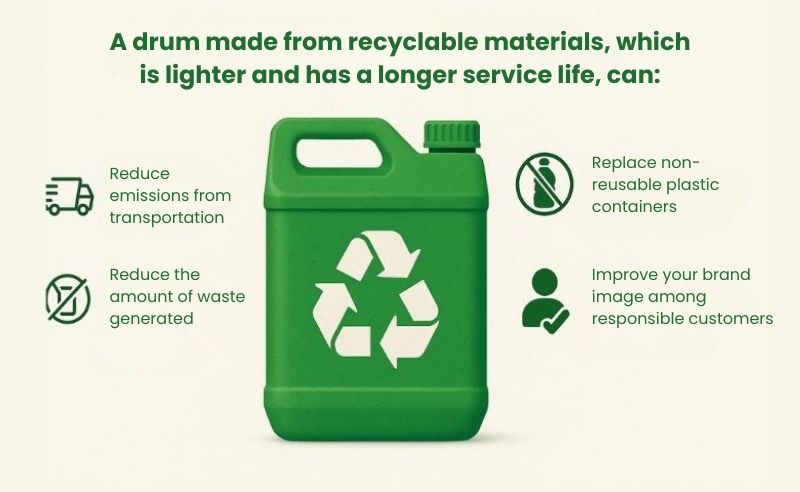Find Out What Type of Emissions Your Company Produces

More and more industries are facing the same challenge: proving their climate commitment with facts. To achieve this, the first step is obvious: measure your carbon footprint.
And to do it right, it is essential to understand the three scopes of emissions that comprise it.
Understanding these three areas is crucial for making informed decisions in areas such as purchasing, logistics, and quality. Understanding the impact of each phase of your activity enables you to minimise your environmental footprint without complicating operations.
We explain them below.
Scope 1: direct emissions under your control
This first group includes all emissions that originate from sources directly controlled by the company, such as its own vehicles, industrial boilers, air conditioning equipment, or machinery that operates on fossil fuels.
| For example, if you have a plant that uses gas to heat products or a delivery fleet with diesel vans, you are generating Scope 1 emissions. These are easy to detect and also easy to reduce, with decisions such as renewing vehicles, switching fuels, or improving the energy efficiency of the process. |
Scope 2: electricity and energy consumption
This includes emissions that you do not generate directly, but which you cause by consuming energy. For example, when you switch on packaging machinery, light a warehouse, or cool a storage facility, you are using electricity that has probably been produced with emissions.
Even if you don’t control the power plant, these emissions still count in your balance sheet. You can reduce them by purchasing certified green energy, installing solar panels, or making small investments in insulation and LED technology.
Scope 3: indirect emissions that often go unnoticed
This is the broadest scope and, at the same time, the most difficult to control. It includes everything that you do not manage directly, but which forms part of your business activity: transport contracted to third parties, manufacture of raw materials, packaging, staff travel, or even the use and recycling of the product by the end customer.
In industrial sectors, these emissions often account for more than 70% of the total.
| Think of it this way: if your supplier manufactures components from steel in another country, and those components are transported to your plant, that emission is part of your footprint. The same goes for the impact of the drum or container you use, especially if it cannot be recycled properly. |
What do we mean by carbon footprint?
A carbon footprint is the sum of all greenhouse gases (GHG) that a company emits directly or indirectly. It is measured in tons of CO₂ equivalent and ranges from the fuel in your vehicles to the use a customer makes of the final product.
This indicator is not only key to complying with environmental regulations. It has also become a purchasing criterion, a selling point, and a requirement for collaborating with large distributors or international chains.
Why it is important to ask questions when starting an industrial project
In many companies, decisions about packaging, transport, or suppliers are made based on habit or price. Still, if we want to move toward a decarbonised industry, we need to ask before we decide:
- What emissions does this choice generate?
- Are there alternatives with less impact?
- Does it affect compliance with environmental standards?
Addressing these issues from the outset allows you to anticipate legal requirements, improve your corporate reputation, and, above all, reduce emissions without any surprises along the way.
And… what role does packaging play in all this?
More than many companies realise.
The type of packaging you choose directly influences scope 3, especially when it comes to sensitive products such as chemicals, pharmaceuticals, or agri-food ingredients that require safe, approved, and increasingly sustainable packaging.
A drum made from recyclable materials, which is lighter and has a longer service life, can:
- Reduce emissions from transportation.
- Reduce the amount of waste generated.
- Replace non-reusable plastic containers.
- Improve your brand image among responsible customers.

That is why many companies are looking to redesign their packaging from a sustainability perspective, without compromising on safety or regulatory compliance.
How to start measuring your carbon footprint
You don’t need an entire sustainability department to get started. The important thing is to take the first step and collect key data:
- Fuel and electricity consumption.
- Suppliers and materials used.
- Kilometres travelled by goods.
- Life cycle of the packaging or product.
From there, you can work with external consultants or specialised tools to calculate your actual footprint, set targets and start reducing in phases.
Measure, reduce and communicate: the virtuous circle
Once you have identified your emissions, it is time to take action. Many companies are starting where they can see the biggest impact: improving transport, changing packaging or working with more sustainable suppliers.
But it is equally important to communicate progress. Showing concrete data that you are reducing your emissions reinforces market confidence, puts you in a better position in tenders and allows you to obtain environmental seals or certifications.
Measuring without acting is useless. And acting without measuring cannot be justified.
Sustainability begins with asking questions
The important thing is not to have all the answers from day one. The important thing is to know what questions to ask and who to ask.
If you are starting to measure your emissions or already know where to take action, tell us about your situation. We can help you identify the impact of your packaging and suggest real improvements tailored to your sector.
You may also be interested in: